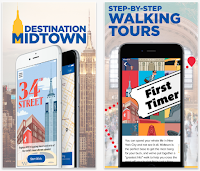 |
| Intercepting poachers at Lewa Conservancy. |
I have never understood the attraction of hunting, either for profit or for adventure. I do of course understand the need for hunting if your personal survival depends on it. I also understand that many native populations around the world still rely on hunting wild game to supplement their diets, even if they have access to modern food sources. However, it is rare, if not completely unheard of for native populations who hunt wild game to indiscriminately slaughter large numbers of wild animals simply for ‘sport’ or ‘adventure’.
I was shocked to read recently that the Convention on The Trade in Endangered Species estimates that at least 20,000 elephants were killed for ivory in 2015. In fact, there are now fears that more elephants are being slaughtered each year than are being born. Needless to say, it is impossible to know exactly how many elephants are dying each year at the hands of criminal poaching gangs.
In 2016, the Great Elephant Census indicated that poachers slaughtered nearly 30% of East Africa’s savanna elephants from 2007 to 2014, some 144,000 animals. Poachers also killed nearly two-thirds of central Africa’s forest elephants between 2002 and 2013. Currently, fewer than 400,000 elephants are believed to remain in 18 sub-Saharan countries. While this figure may seem large, when elephants are being slaughtered at the rate 20,000+ creatures a year, it doesn’t take a brilliant mathematician to work out that at the current rate of slaughter, Africa’s wild elephant population could be extinct in twenty years.
Thankfully, there are organisations and people prepared to do whatever they can to minimize—even if they cannot completely end—this wild life slaughter. One of these people is the philanthropist (and former co-founder of Microsoft), Paul Allen, who has funded a new high tech anti-poaching system known as the Domain Awareness System (DAS). Responding to the elephant poaching crisis in the Great Elephant Census report, Allen and his team of technologists and conservation experts are partnering with park managers across Africa to provide the new technology to help protect this iconic species and other wildlife threatened by human activities.
 |
| (Stock image). Credit: © jhvephoto / Fotolia |
The Domain Awareness System aggregates the positions of radios, vehicles, aircraft and animal sensors to provide users with a real-time dashboard that depicts the wildlife being protected, the people and resources protecting them, and the potential illegal activity threatening them.
Other high tech tools that are helping in this vital fight are satellites, drones, camera traps, animal sensors, weather monitors and eventually new technology yet to be invented. The new technology also helps take the guess work out of the anti-poaching fight. With real-time data at their fingertips, park rangers can respond quickly and effectively to catch poachers before they wreak havoc on elephant herds and other wild game.
Other high tech tools that are helping in this vital fight are satellites, drones, camera traps, animal sensors, weather monitors and eventually new technology yet to be invented. The new technology also helps take the guess work out of the anti-poaching fight. With real-time data at their fingertips, park rangers can respond quickly and effectively to catch poachers before they wreak havoc on elephant herds and other wild game.
Sadly, however, it is not just the wild game that are threatened by poachers. Each year, heavily armed poaching gangs kill dozens of park rangers across Africa’s numerous game reserves. The Game Ranger website reports that, “More than 1,000 rangers have been killed worldwide and many more injured over the last 10 years.” Clearly, the stakes are high for both the wild life and their human protectors, so anything that can help reduce the human and animal death toll is to be applauded—which brings us back to the Domain Awareness System.
The system has been installed at six protected wildlife conservation sites since November 2016. Working with Save the Elephants, African Parks Network, Wildlife Conservation Society, and the Singita Grumeti Fund as well as the Lewa Conservancy and Kenya’s Northern Rangelands Trust, a total of 15 locations are expected to adopt the system this year.
When the system is fully operational by the end of 2017, it will cover more than 90,000 square miles of protected area. An ongoing consortium of conservation NGOs, government partners, and technology companies, is working with Paul Allen's team to integrate DAS with software used in nearly 500 sites across 46 countries to measure, evaluate and improve the effectiveness of wildlife law enforcement patrols and onsite conservation activities.
One can only hope that the combined forces—human and technological—arrayed against the illegal trade in elephant tusks, can put an effective end to this criminal practice before it is too late.
Here is a short video outlining how the Domain Awareness System works in practice:
More Information



